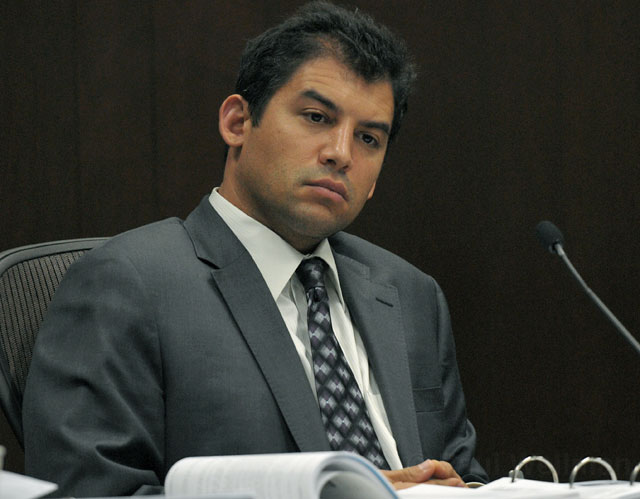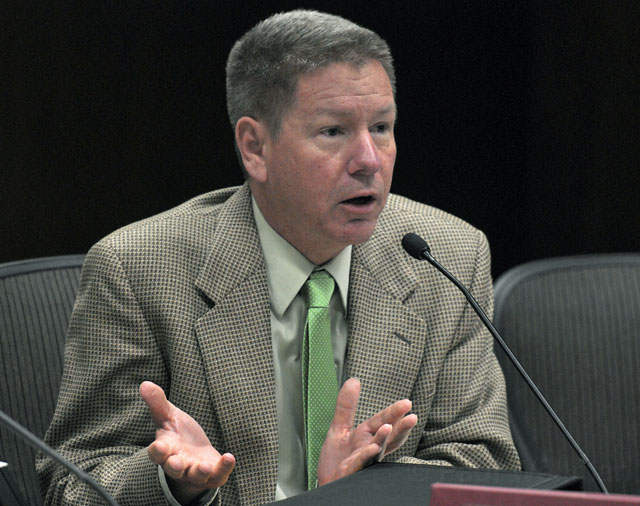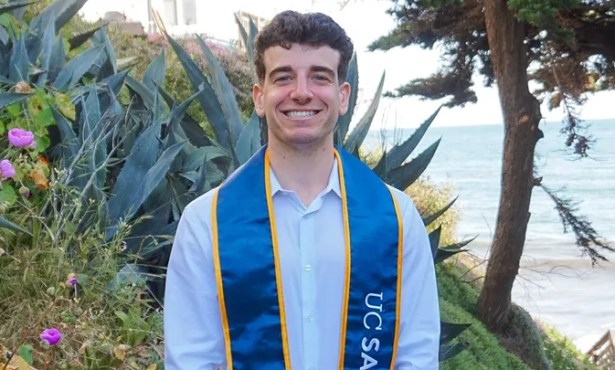Political Idol Auditions
Das and Dale Find Wiggle Room on Density

Now that Santa Barbara City Councilmember Das Williams is newly elected to the State Assembly, the clock has begun ticking in earnest over who — if anyone — can muster the four votes necessary to fill his vacancy on the council dais. Williams will be sworn in as the newest 35th Assembly District representative — culminating a political campaign that began 21 months and about $1 million ago — on December 5.
With Williams’s departure imminent, the ticking is getting louder over the fate of Santa Barbara’s much-debated General Plan update, known as Plan Santa Barbara, a process that’s taken no less than five years and $3 million. Holding up adoption of a new plan, which requires five votes, is the issue of increased residential density. Last Wednesday — just hours after celebrating the win of a hard-fought campaign — Williams met with his council nemesis Dale Francisco to pore over multi-colored city zoning maps to see if any common ground could be detected. (Also in attendance were Councilmember Frank Hotchkiss, a handful of city planners, at least one planning commissioner, and architects, housing advocates, and neighborhood activists.) While it remains far too soon to declare that the 4-3 council impasse over density has been resolved, Williams and Francisco did manage to locate a significant patch of wiggle room from which subsequent agreements might possibly emerge.

In a nutshell, Francisco — who has fought against increased housing density and the congestion it breeds — allowed that he’d be willing to consider increased housing along Haley Street and Cota Street, between State and Milpas streets. That’s only if Williams and his three council allies — who argue such increased densities are necessary to expand the possibility for new affordable housing — agree to declare off-limits six square blocks of downtown near the courthouse deemed historically sensitive. In addition, Francisco demanded support for new protections against the densification of neighborhoods now zoned to allow apartment buildings. Many of these neighborhoods, like the historic Bungalow Haven district on the upper Eastside, allow for much more development than is now on the ground.
“I’m not speaking for other members of the council. I may not even be speaking for myself.” — Santa Barbara City Councilmember Dale Francisco
During Wednesday’s discussions, Williams pushed hard for some specific sense of what Francisco could live with and frequently referred to the three council colleagues he purported to speak for. By contrast, Francisco was cautious about committing to anything, stating at one point, “I’m not speaking for other members of the council. I may not even be speaking for myself.” What remains to be seen is what neighborhoods Francisco has in mind and what kind of new protections would be needed. It also remains to be seen whether these questions can be adequately addressed by November 16, the next time the council grapples with what’s been a sprawling, unwieldy controversy.
In the meantime, the jockeying to replace Williams has begun in earnest with the council officially opening his seat to applicants this Tuesday. For anyone to get the nod, four votes are needed. Three former councilmembers, as many as four current planning commissioners, and five former council candidates have expressed varying degrees of interest. Without Williams, the council will be split 3-3 on a host of issues, density in the General Plan being just one. (The homeless, gangs, medical marijuana, bulb-outs, and a chronic budget shortfall are others.) The trick will be finding anyone sufficiently informed on the issues — but agnostic on them, as well — who could lure votes from both camps. Presumably, anyone appointed would be able to run as an incumbent next November, a major advantage.
Given the recent election results — which have only heightened partisan tensions among councilmembers — it’s unclear why any member would give such a leg-up to a member of the opposing camp. The candidates are scheduled to make their cases before the council December 7, though many have begun doing so in private, and the council is scheduled to decide December 14. If no one passes muster, the matter would have to be resolved during next November’s City Council race. In the meantime, the council would hobble along with one councilmember less than a full load. “Finding someone who can walk on water is highly unlikely,” said one city hall insider, “but we’re just asking for someone who knows how to surf.”



